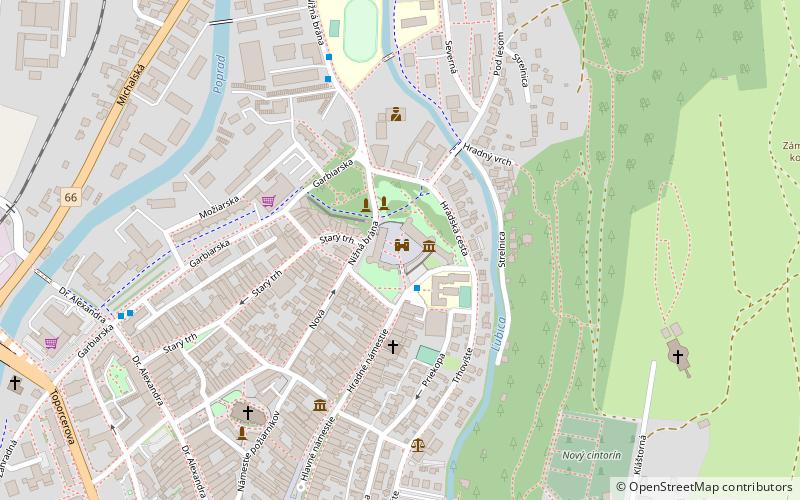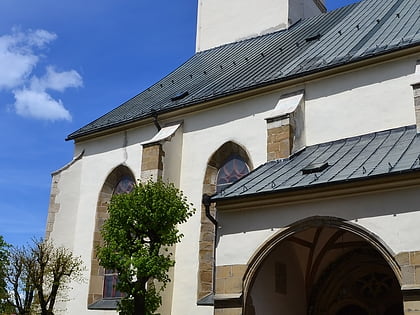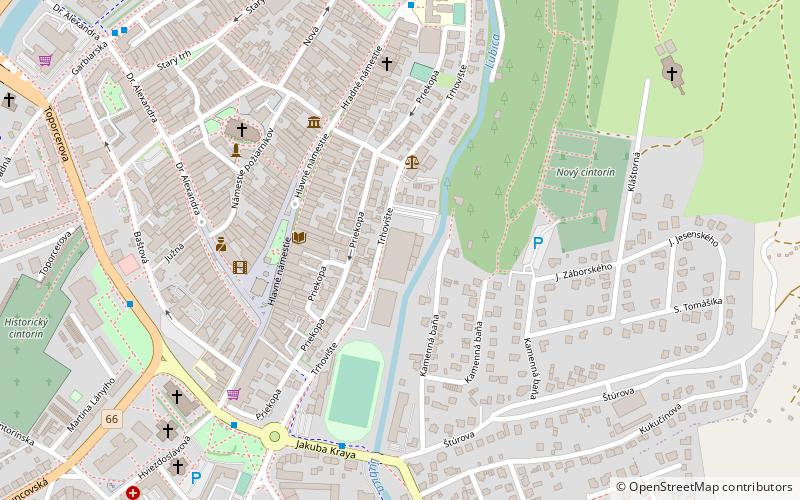Kežmarský hrad, Kežmarok


Facts and practical information
Castle in Kieżmark - a castle complex located in the city of Kieżmark in Spisz, in northern Slovakia. It belongs to the so -called city castles, located in cities, connected with walls into one defense system and to significantly increase the defense of these urban centers. In the case of Kieżmark, however, it was the castle owners who for many years belonged to the city's greatest enemies, which they wanted to deprive the lucrative privileges of the free royal city and push to the rank of a private city.
The beginnings of the history of the Kieżmarski castle are associated with the Hungarian family of the Zápolyów, who in the 15th century became the owners of the former settlement centered around the church of St. Elizabeth in the pitchflet of Poprad and ľubica. Construction works began in 1465 when Emeryk Zápolya became Zupan Spisz. As the first - in the same year - a gate tower was created. In the following years, defensive walls were erected, which were connected with the existing city walls. In this way, the castle obtained approximately its current shape on an irregular ellipse. Inside, along the defensive walls, residential and utility buildings were built, including the Gothic palace. For their construction was used, among others materials from the then demolished church of St. Elizabeth. The fortification system has been supplemented with a defensive tower on the north-west side, in which the chapel is currently located.
In 1528, the Łaski family came into possession of the castle. Hence, in 1565, Beata née Kościeleckie, Grace, a wealthy widow of the Ostrog prince, and then the wife of Olbracht Łaski, the Lord at Kieżmark from the granting of King Jan Zápolya, took the first tourist trip in the Tatra Mathered tourist trip, during which she arrived deep into the Kieżmarska Valley. And in that castle she was later imprisoned by her husband, who At that time, she passed her in the roeeds in Europe.
By the way of various pledge transactions and purchases, the castle got into the hands of the Thökölych family in 1579. Her four generations were based in the castle, and disputes between the city and Thökölym came to such a level that street brawls, mutual assaults and acts of revenge were on the agenda. The Thökölym family was the eternal enemy of the Habsburgs, and Imre Thököly, the leader of the great anti -Habsburg creation of Kurus, outbreaks in 1672, additionally allied with Turkey in the fight against the Empire. So when the Turks suffered the defeat at Vienna in 1683 Emperor Leopold and confiscated all Hungarian estates of Thököly, and therefore nothing from the original equipment of the castle has survived.
During the reign of the first Thökölych Gothic, the defensive castle was thoroughly rebuilt into a rich, Renaissance powerful headquarters. Attics and sgraffito decorations appeared on the defensive walls. Around 1628, the north-eastern wing of the palace was rebuilt, in which the rooms were changed, the doors and windows were rebuilt, and the interior was decorated with wall paintings. A gate tower was also rebuilt, in which a dining room and living room were arranged. South of it, a quadrangular residential building was erected by a defensive wall. In the years 1657-1658 the former defensive tower was rebuilt into the chapel, already in the Baroque style. The craftsmen brought from Italy at that time decorated the interior of the castle, especially the chapel, with rich stucco. Probably with their participation, delicious horse stables east of the palace were created, where in the 1970s the illusionist sgraffito was found on the facade.
The last owner of the castle was Ferdynand Rüber, from which the city bought it in 1702. After passing the castle in the possession of the city, his room was used as a granary, later barracks were placed in it, followed by various manufactories and workshops. Deprived of comprehensive supervision, the castle destroyed, several times different parts were destroyed by fires. Already in the second half of the 19th century, ideas for museum purposes appeared, but only after the partial renovation of the main tower in 1931 the first museum exhibition opened in it.
In the years 1962-1985 extensive archaeological work was carried out at the castle, combined with its thorough maintenance. Currently, the entire facility serves museum purposes. The exhibition placed in it presents the development of Kieżmark from its creation to the 1930s against the background of the history of the families.
Kežmarský hrad – popular in the area (distance from the attraction)
Nearby attractions include: Basilica of the Exaltation of the Holy Cross, Wooden articular church in Kežmarok, Kežmarok Ice Stadium, The castle- museum.




